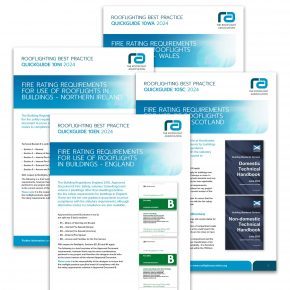
Fixed wire testing: What it is and why it is so important for business owners
When was the last time your company’s property had its electrical installation inspected and assessed? It is more important than you think – and there are compliance requirements on top, too.
Electrical fixed wire testing ensures your property is safe, functional and protected – all required elements for you complying with the Electricity at Work Regulations of 1989.
What does this kind of testing cover?
Often referred to as periodic inspections, this kind of work sees a professional visit your site to ascertain the condition of your electrical installations.
It is a time where you can get your legal compliance refreshed and any deficiencies or concerns addressed. Without much disruption, you will see a worker come in to review how electrical power is distributed from the source to any areas requiring powered equipment.
The range of applications relevant to this is, as you would expect, quite varied. From fixed plants and air conditioning through to simple socket outlets, fuses, circuit breakers and distribution boards or switchboards, there is a lot that needs to be compliant and safe to use and receive power.
Your staff are involved too
Simply put, you need to meet national safety standards for every installation that uses electricity in your property. There is also an element of staff safety; anyone who operates machinery and powered equipment needs to be proven to be safe and capable.
As you would imagine, there is a range of risks and hazards that come with the maintenance and use of any kind of powered equipment.
Safety standards need to have your company prove that risks are controlled. These can include common pitfalls like a lack of bonding or earthing, the overloading of circuits and equipment and electric shock and fire hazards which can be caused by faulty installations or generally defective or DIY equipment.
What specific legislation is involved?
Firstly, you are of course liable and responsible for the health and safety of your staff at your business and property.
Next up are the general safety regulations that cover fixed wiring. This is governed by the Electricity at Work Regulations act of 1989, often referred to simply as EAW.
After that, it is the HSE, or Health and Safety Executive which defines that fixed wiring needs to be properly maintained in a workplace to avoid any preventable danger.
Sounds good. How can I get ahead of the game on this?
There is a range of processes and activities you can put in place in your property and business to stay ahead of issues.
It is a commendable and smart choice to adopt and, once the work of setting your changes up is done, is easy to incorporate into your regular ways of working.
You need to start at a basic level of visual checking of your electrical equipment, but you can easily expand this. Consider practices like doing thermographic testing and functions testing.
You can also look into doing simple labelling of your circuits to help visual identification. It is smart to have a regular review of your documentation and an appraisal and survey of both your risk assessment documents and your general health and safety documents as relates to equipment usage.
In closing
It is important to lastly keep in mind that your own risk profile as relates to fixed wire electrical inspections will vary from other businesses.
There is no one size fits all answer to the frequency of your checks; if you are unsure about how to handle your schedule for this task, get in touch with a provider of testing who can appraise your site and advise on a recommended frequency of testing.
Latest news

29th April 2024
Hush: New Hushlay options offer acoustic upgrade potential
Leading UK acoustic systems manufacturer Hush Acoustics has introduced two additional variants of its Hushlay Soundmatting product.
Posted in Acoustics, Noise & Vibration Control, Articles, Building Industry News, Building Products & Structures, Building Services, Facility Management & Building Services, Floors, Innovations & New Products, Insulation, Restoration & Refurbishment, Retrofit & Renovation
29th April 2024
Digital Construction Week 2024 speaker programme announced
The programme at Digital Construction Week is carefully designed to help you keep up with the fast pace of innovation in the built environment.
Posted in Articles, Building Industry Events, Building Industry News, Building Products & Structures, Building Services, Exhibitions and Conferences, Innovations & New Products, news, Posts, Restoration & Refurbishment, Retrofit & Renovation, Seminars, Sustainability & Energy Efficiency
29th April 2024
Steel Window Association - for the specialists in domestic and commercial refurbishment of steel windows
The UK-wide Steel Window Association members are the established, proven experts in the renovation and sympathetic refurbishment of steel windows and doors in both domestic and commercial premises.
Posted in Architectural Ironmongery, Articles, Building Associations & Institutes, Building Industry News, Building Products & Structures, Building Systems, Doors, Glass, Glazing, Restoration & Refurbishment, Retrofit & Renovation, Steel and Structural Frames, Windows
29th April 2024
The Rooflight Association: Rooflights & Fire Regulations - what you need to know
The Rooflight Association has published a series of ‘Quickguides’, covering the fire rating requirements for use of rooflights in buildings for each of the four devolved UK nations.
Posted in Articles, Building Associations & Institutes, Building Industry News, Building Products & Structures, Building Regulations & Accreditations, Building Services, Ceilings, Health & Safety, Innovations & New Products, Lighting, Publications, Restoration & Refurbishment, Retrofit & Renovation, Roofs, Security and Fire Protection, Walls, Windows
 Sign up:
Sign up: